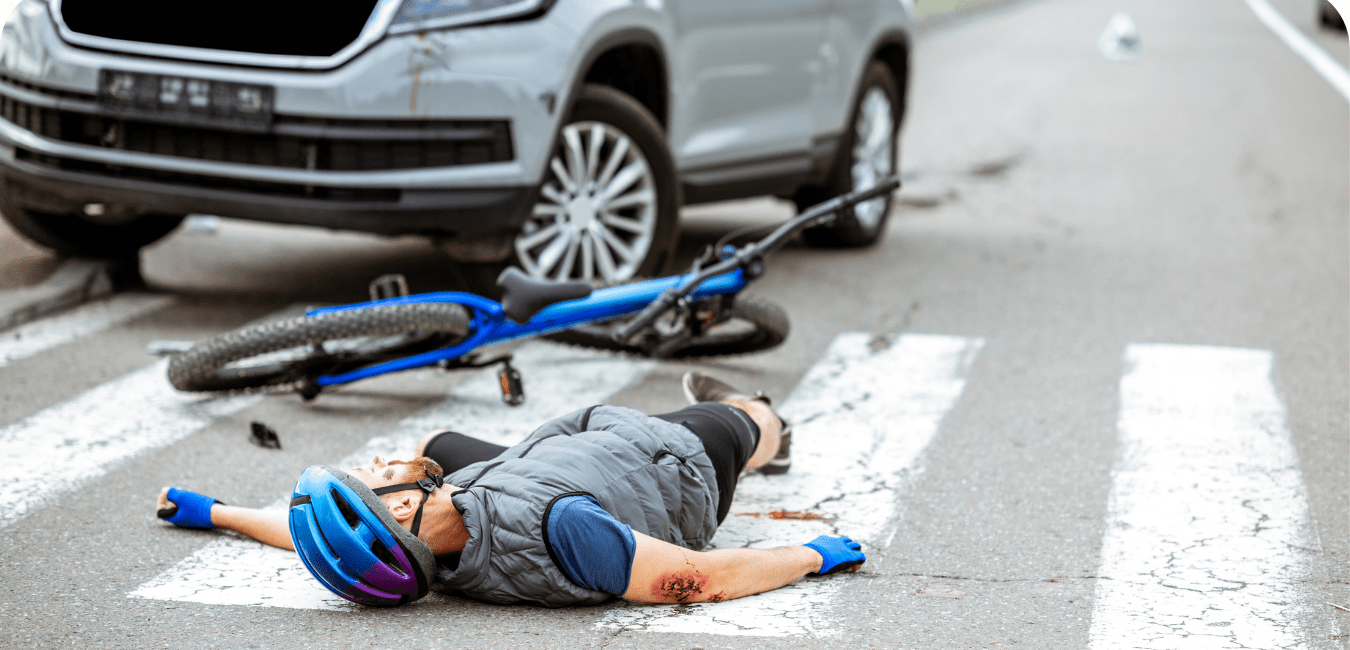Colorado Pedestrian Accident Lawyer
Pedestrian accidents, where cars collide with pedestrians, have nationally been more prevalent. In the last decade, the percentage of pedestrian fatalities has increased by 46%. Pedestrian accidents can be deadly because, unlike a car accident between two cars, the pedestrian has no sense of protection from an oncoming car.
A pedestrian in Colorado is defined as a person walking alongside or near the road on a sidewalk, path, or crosswalk. This definition extends to those on bicycles and electric bikes, scooters, skateboards, roller skates, hoverboards, and wheelchairs and motorized wheelchairs. A good way to break it down is to think about what is allowed on the road. If you consider that cars, motorcycles, motor scooters (mo-peds) and bicycles—so long as they are in the designated bicycle lane—are the forms of transportation that are allowed on the road, everything else that could be on a sidewalk or crosswalk near the road would count as a pedestrian. While bicycles are allowed on the road, when crossing the street, they are pedestrians. No matter the mode of transportation, cars are required to yield to pedestrians in Colorado.
Yet, all too frequently, pedestrian accidents occur. In many cases, pedestrian accidents are preventable, especially if distracted or reckless driving is to blame for the accident. While an automobile may hit a pedestrian due to weather conditions or equipment failure, focusing on the road ahead of them is within a driver’s control. Not only that, but it is expected of drivers under Colorado law.
Do pedestrians have rights in Colorado?
The laws dictating the behaviors that are expected of pedestrians in Colorado are in place for the same reason as those directed toward drivers: to ensure the safety of everyone on the road. Bearing that in mind, it is expected of pedestrians in Colorado to:
- Follow the flashing WALK/DON’T WALK signals
- Cross at crosswalks
- Give cars time to stop for you
- Be aware of their surroundings
Despite pedestrians having the right-of-way, they still have to act to preserve their own and others’ safety. This means that a pedestrian cannot dart into traffic or cross the street while idly on their phone because it takes effort on both sides to make sure everyone is safe. The onus cannot entirely be on drivers.
Can the pedestrian ever be at fault in a pedestrian accident?
Depending on the circumstances, yes, the pedestrian may be at fault in a pedestrian accident. Generally speaking, pedestrians have the right of way and cars should yield to pedestrians, so typically, the driver would be at-fault. Under some circumstances, however, why pedestrians could be liable has to do with their duty of care.
In order to prove that a driver is at-fault in hitting a pedestrian, you must prove that the driver was negligent. Part of this is proving that the driver did not act how a reasonable driver under the circumstances would.
Just as a driver has a duty of care, so does a pedestrian. A pedestrian’s duty of care is to act as a reasonable pedestrian under the circumstances. Thus, if a pedestrian deliberately put themselves in harm’s way and a driver couldn’t avoid hitting them, they would be negligent as a pedestrian. The pedestrian may try to sue the driver on a Personal Injury claim, but the driver would have a defense.
Do You Have A Case?
Our free, no obligation, consultation gives you the opportunity to talk to an experienced attorney about your situation and gain insight into the best way to proceed. Fill out the form below to schedule.

